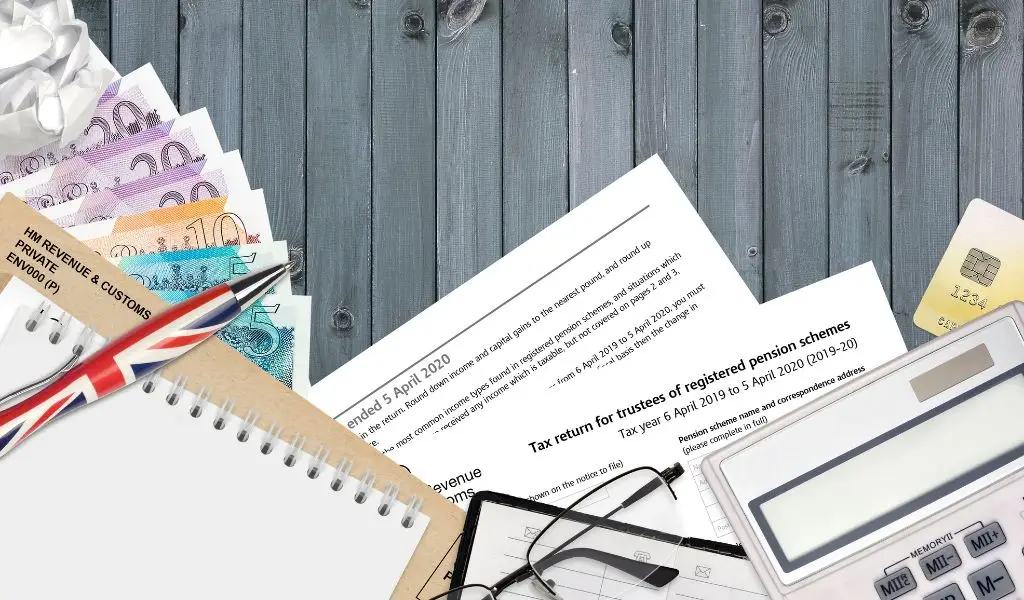There are perks to working from home, and a lot of downsides as well. Let’s discuss the benefits for now. For example, the tax relief you can claim if you work from home. So, what is HMRC Working from Home Allowance?
To be clear, tax relief and tax rebates are not one and the same. When you claim tax relief, it means deducting from your taxable income. Which reduces the amount of tax you owe. On the other hand, a tax rebate is a refund. Anyone who is eligible for tax credit or has overpaid tax can benefit from a tax rebate.
What is Working from Home Tax Relief?
If your working hours are spent inside your home, then the home tax relief programme can be resourceful for you. This programme allows employees to claim tax relief on expenses that are related to work.
There is no need for you to carry that excess financial burden when you can take advantage of this tax relief.
Consider electricity, heating, and any equipment necessary for your work. These are all expenses you can claim.
A gentle reminder that anything you use for both personal and business purposes does not fall into this category. For example, the rent you pay.
Are you Eligible for the Work from Home Tax Relief?
Anyone who has worked from home during the tax year can apply for the work from home tax relief. It is only applicable to those who worked from home because their employer asked them to do so. In terms of eligibility, the programme is limiting.
Following are the examples of eligibility:
- If the distance between your office and where you live is too far as per your job requirement. Thereby making it unreasonable to travel back and forth.
- Your employer does not provide you with the proper facilities to do your job.
Under the following circumstances, you are not eligible to claim work from home tax relief:
- Your employment contract states that you can perform remote work partly or fully.
- Your employer’s office is temporarily unavailable to you because it is occupied.
- You either chose to work from home or are self-employed.
Simply Choosing to Work Remotely May not be Enough.
It may not be enough that your employer tells you to work from home for you to claim tax relief. Suppose you are working in hybrid mode, as in working remotely only a few days a week. Then, claiming tax relief is only acceptable if there aren’t enough suitable facilities at the office for you to do your job properly.
You must meet the criteria set by the government to claim HMRC Working from Home Allowance.
How to Claim HMRC Working from Home Allowance?
You can apply for tax relief either through your self-assessment tax return or by using the HMRC online service.
Seeing as working from home is becoming a norm, the demand for tax relief programmes for remote workers is probably going to increase.
Hence, you should record all your expenses that relate to work. This way you can benefit from this tax relief programme and save on taxes.
How Much Tax Relief Can You Receive?
There are two paths to choose from:
Employer Pays Expenses:
Your employer may pay for your costs and remit them tax-free as part of your salary.
You Claim Tax Relief:
You are more likely to ask HMRC for tax relief than your employer paying your expenses.
Bear in mind that you cannot go down both these paths. If your employer is covering your expenses, then you cannot apply for tax relief.
Depending on the rate of income tax you pay, you can make your claim HMRC Working from Home Allowance.
There are three categories:
Basic-rate Taxpayers
Tax relief of 20% on £6. Obtain £1.20 weekly = £62.40 per tax year
Higher-rate Taxpayers
Tax relief of 40% on £6. Obtain £2.40 weekly = £124.80 per tax year
Top-rate Taxpayers
Tax relief of 45% on £6. Obtain £2.70 weekly = £140.40 per tax year
In case you did not claim tax relief for the past two years, you can still claim it by backdating.
You will receive two years’ payment combined with your subsequent salary.
Additionally, if you are still eligible for the current tax year as well, you will receive three years’ worth of tax relief. The following are the categories for backdated tax relief:
Basic-rate Taxpayers
Could get a lump sum of £187.20.
Higher-rate Taxpayers
Could get a lump sum of £374.40.
Top-rate Taxpayers
could get a lump sum of £421.20.
Fortunately, HMRC does accept your backdated claims going back to four years.
HMRC Working from Home Allowance benefits individuals. If you are living with roommates, you can all claim it only if you all are working remotely.
Is there a Deadline to Apply for the WFH Allowance?
If you were working remotely in the tax years 2020-21 and 2021-22, but did not claim tax relief, you have time. HMRC’s microsite and online portal are not going anywhere.
What About a Backdated Claim?
The good news is that you can make a backdated claim. You will receive a lump sum amount for it.
Although, there is a deadline for making said backdate claims. If the tax year is 2020-21, then the last date is 5th April 2025. In case you are backdate claiming for 2021-22, you have until 5th April 2026 to do so.
HMRC has a Working from Home Allowance portal through which you can make a backdated claim.
Does your Tax Code Change when Working Remotely?
Yes, if you are claiming HMRC Working from Home Allowance, then your tax code changes accordingly.
Your tax code is normally written on your pay slip. For the tax year 2022-23, the tax code 1275L is the most usual. Majority of people in the UK earn £12,750 as personal tax allowance. It represents the amount you can earn free of tax in a year.
Therefore, if you are receiving tax relief, the code will change as you have a greater amount of personal tax allowance.
The reason for your tax code being different can be something other than work from home tax relief. For example, you are benefiting from a company car.
Suppose you were benefitting from the HMRC Working from Home Allowance but are not eligible for any longer. Under such circumstances, you should make sure you are not receiving it anymore. You can do so by checking your PAYE tax code.
If you do not check and you are still claiming it, you will end up paying extra tax at the tax year’s end.
Reach out to HMRC if that is your case, so that your tax code can change.

What if the Tax Relief Cannot Cover Your Additional Requirements?
If the amount you receive does not cover the extra costs you paid, you can claim for relief on higher amounts.
There are two ways to do so:
Self-Assessment: Every year, if you complete a self-assessment form, then you can add your claim to it.
P87 Form: You can fill out a P87 form as it allows employees to claim expenses up to £2,500.
HMRC states the following as extra costs:
- Metered water bills
- Business related calls
- New broadband connection
- Heating
- Insurance of home contents
The above-mentioned list does not include costs that remain the same whether you choose to work from home or from your office premises. For example, council tax, rent, or even your lunch.
You need to provide the following to claim tax relief:
- Your designation
- The name of your employer and their PAYE reference. You can find the PAYE reference on P60 or your payslip.
- Evidence in the form of receipts that show these additional costs.
An important point to remember, you will not receive the full cost of the additional expenses. You will only get tax relief on the total.
Suppose you spent £300 on additional costs. Your net wages will go up by 20% or £60 as a basic-rate taxpayer.


